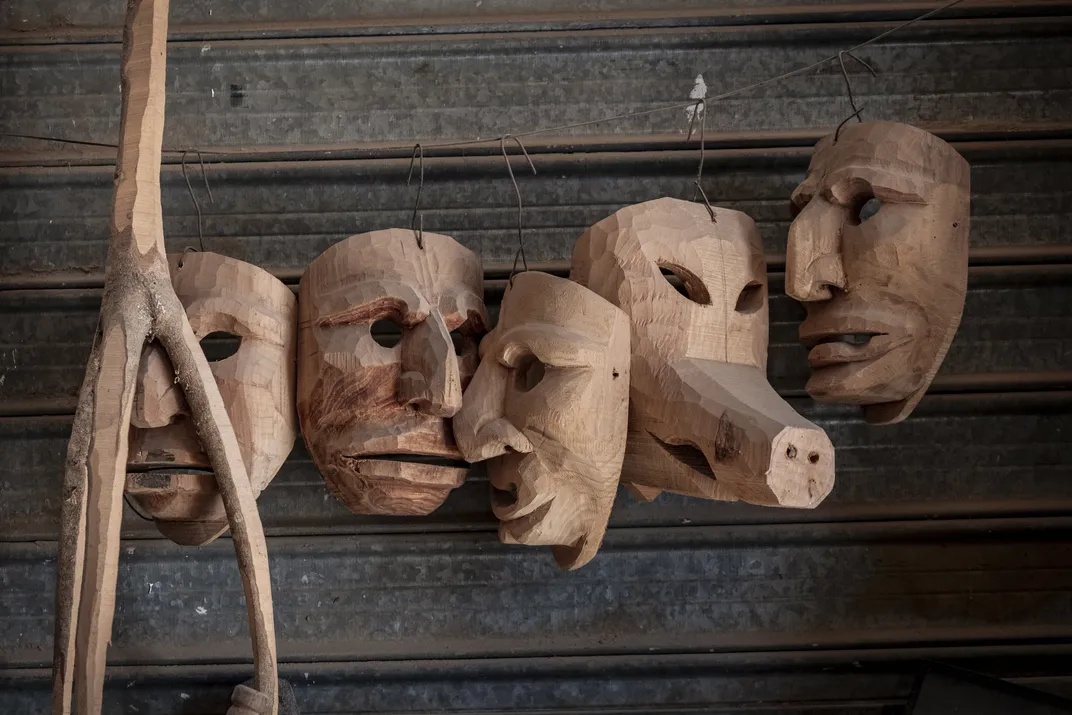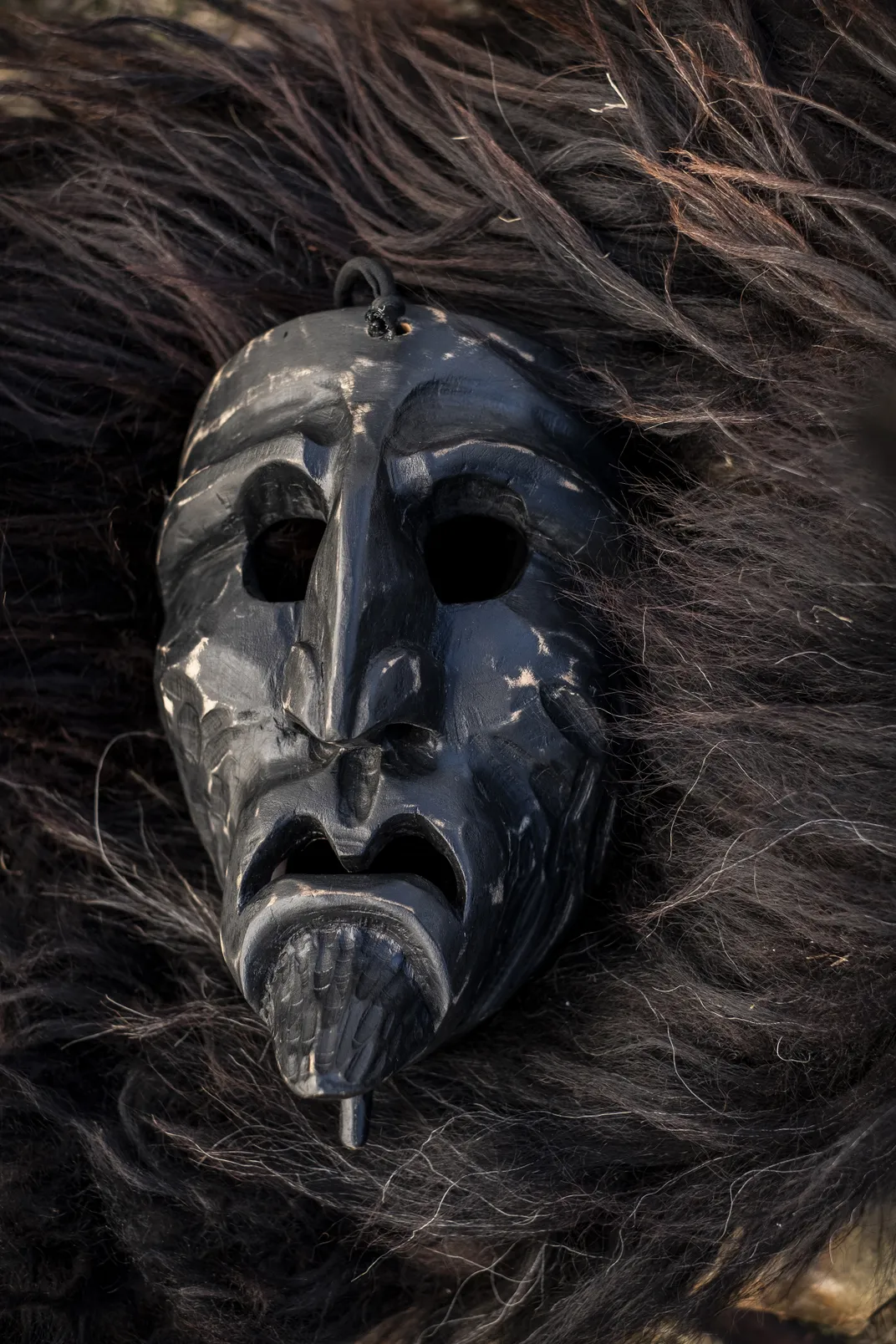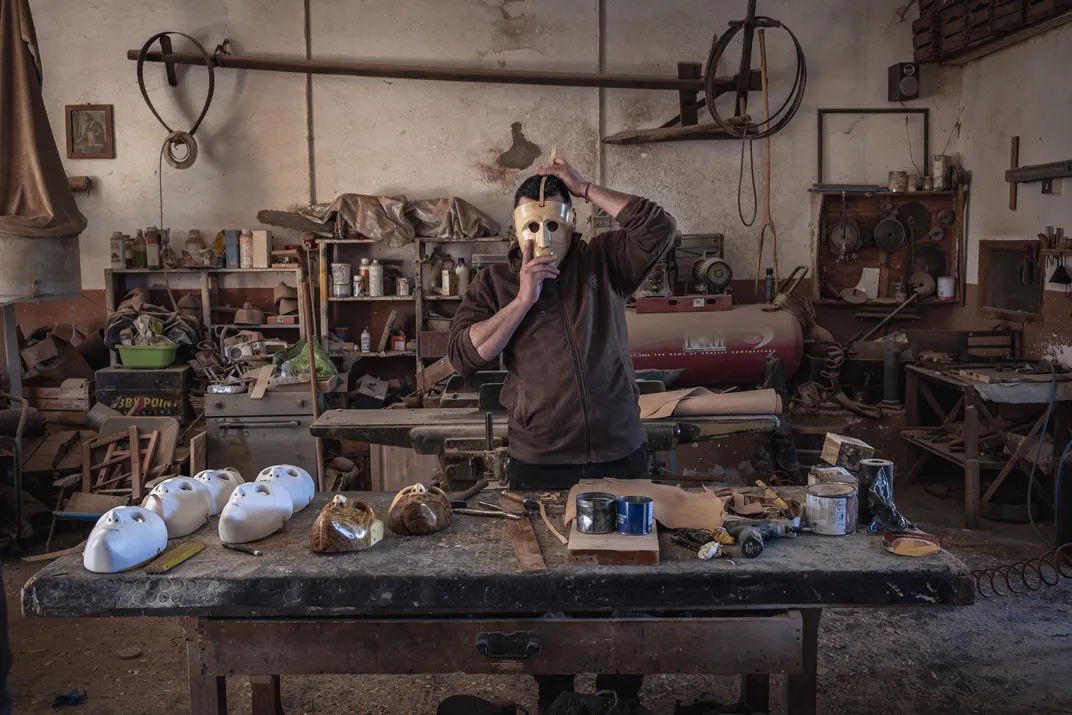The first time Salvatore Gungui transformed into a Mamuthone, he was 14 years old.
He pulled on the traditional leather-soled shepherd’s boots, velvet pants and jacket and wrapped himself in a heavy cloak. Across his chest, he strapped a cluster of bells that weighed more than 60 pounds. He felt a strange mix of emotions as he paraded through the streets, a somber mask covering his face. “There was my grandpa, and my mama and papa, and also my uncle, and they were so proud,” recalls Gungui, more than four decades later. And yet, he adds, “It was a horrible day. I was tired and scared because it was such a long parade. I remember my feeling was, ‘I can’t do it anymore. I can’t, I can’t.’ But I carried on.”
The parade of Mamuthones is an annual winter tradition in the Italian village of Mamoiada. The village of around 2,300 is in the heart of Sardinia, an Italian island about 175 miles from the mainland. (By comparison, Sicily is only two miles from the mainland.) While Italian is the island’s official language, Sardinians also speak a separate Latinate language that most Italians struggle to understand. In villages like Mamoiada, just about all the income is related to either agriculture or tourism. The parade of Mamuthones is one of the largest tourism draws of the entire year, even though it isn’t especially cheerful. “It’s a serious and, in some ways, sad carnival,” Gungui told me. “This is not like a theater for making people happy.”
At his workshop in Mamoiada, Daniele Mameli tries on an unfinished Issohadore mask. He and his father, Ruggero Mameli, craft the traditional masks for the festival.
Francesco Lastrucci
Unpainted Mamuthone masks hang at the Mamelis’ workshop, along with a zoomorphic mask for another carnival in a nearby village. The most popular materials for these masks include alder, olive and cherry wood. Francesco Lastrucci
An old and worn Mamuthone mask atop a sheepskin Mamuthone cloak. Francesco Lastrucci
If the…
Click Here to Read the Full Original Article at Travel | smithsonianmag.com…
